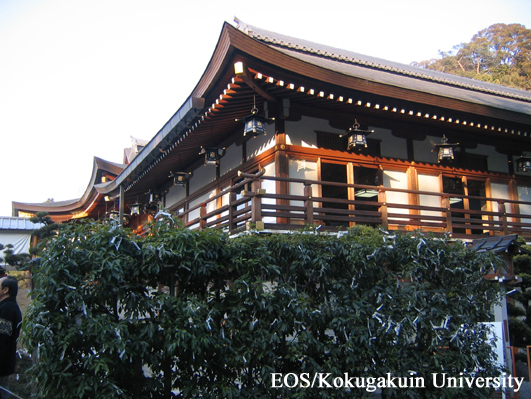- トップ
- Encyclopedia of Shinto
- Tamagaki
Encyclopedia of Shinto
| Main Menu: | |
| Links: |
詳細表示 (Complete Article)
| カテゴリー1: | 4. Jinja (Shrines) |
|---|---|
| カテゴリー2: | Shrine Architecture |
| Title | Tamagaki |
| Text | A fence enclosing a shrine, sacred area, or the imperial palace. It is believed that the ancient form of such a fence was a brushwood barrier using trees, but historically such fences have also utilized stone, wood, and in recent years, even concrete. Fences may be given a variety of descriptive names in accordance with the material and style, including ita tamagaki ("board fence," constructed of thick boards placed side by side), kuroki tamagaki (lit. "black-wood fence," constructed from boards or logs with unpeeled bark), or sukashi gaki ("openwork fence," with wide openings). The term tamagaki is often used generically to refer to both types of fences otherwise known as mizugaki ("sacred fence") and aragaki ("rough fence"). When a shrine's sacred area is enclosed by multiple layers of fences, the innermost fence is normally called the mizugaki, while the terms tamagaki, or else aragaki or itagaki, are used to refer to the outer fences. But the terms tamagaki and mizugaki are occasionally used interchangeably as well. The Inner Shrine (Naikū) of the Grand Shrines of Ise features four layers of fences; the innermost fence is called mizugaki (or "first tamagaki"), the next two inner fences are "second tamagami" and "third tamagaki", and the outermost fence is called the itagaki. — Inoue Nobutaka |






